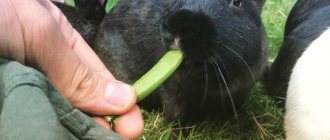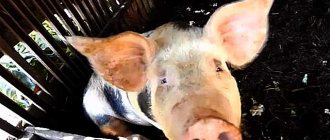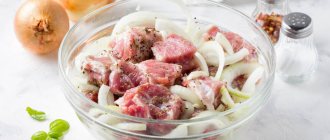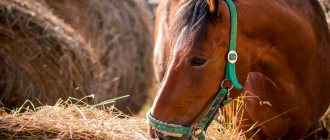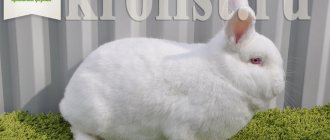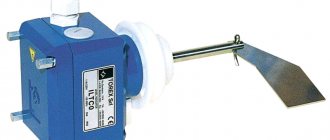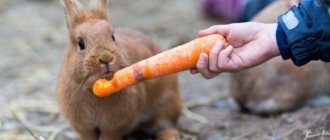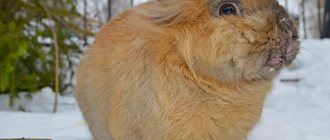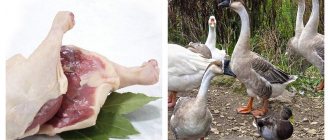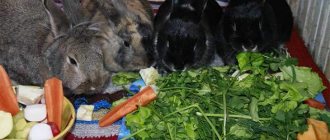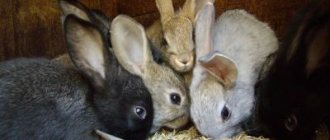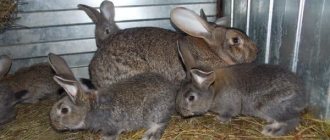Hay plays an important role in a rabbit's diet. In the wild, it serves as the basis for animal health, strengthens teeth and affects intestinal functions. If interruptions occur in the gastrointestinal tract, this leads to death.
At home, rabbit breeders do not always have the opportunity to give their pet fresh grass or greens, so they stock up on hay for this purpose. It retains all the properties necessary for growing healthy individuals.
- 1 Rabbit diet
- 2 The need for hay for a rabbit
- 3 Hay rates
- 4 Types of hay 4.1 Purchased
- 4.2 Granular
Rabbit diet
Health, fertility, and coat condition depend on how balanced the rabbits' nutrition is. Feeding them grass alone is not enough. They need to receive nutrients, minerals, vitamins. For this purpose, several types of feed have been developed, which in combination with grass will only bring benefits.
Hay is a roughage feed that is introduced in the autumn-winter period due to its high fiber content. This group also includes hay meal, straw, bark and tree branches.
Among other types of food, it is worth noting green (tops of root crops, greens, etc.) and juicy (root and tuber crops), which are added to the diet in the summer, concentrated (cereals and legumes, including oats, peas). It is also useful to give your rabbits minerals and vitamins, especially sprouted grains.
It is important that all animals have free access to clean drinking water at all times.
What herbs do we grow?
☏ Fedor, thank you for taking the time for such a meaningful conversation, as well as for sending photographs of herbs that grow in your region. Many of them are widespread in our country too. I also added some of our herbal specimens to the slide show presented. For example, on my plot I grow clover along with excrement. In the meadows and fields there is a lot of chamomile (disinfects, fixes), tansy, which removes helminths, chicory, which improves metabolism after diets and the use of antibiotics. Although it is terribly bitter, rabbits are not afraid of the bitterness, especially if it has a hint of aroma. Even closer to mid-summer, bindweed dominates. Although they write that it is harmful, I feed it, albeit in small quantities, without problems. In conclusion, please comment briefly on the photos you sent.
☎ In general, various herbs reign in the meadows. In some places, yarrow dominates over other herbs. The yellow flowers in the corresponding photo are cress. Rabbits are reluctant to eat it, but they still eat it in dry form. Chernobyl wormwood is almost as good as alfalfa in protein content and is useful for diseases of the gastrointestinal tract. Rabbits eagerly eat peas from the legume family. The same is true for thistle. By the way, all prickly herbs, except thistle, are inedible. Clover, a nutritious forage, belongs to the legume family. It is better to mow oats before flowering. After flowering, rabbits eat it very reluctantly, but it can be given in mixed hay. Sophora japonica is not a herb, but a shrub, but rabbits eat it with pleasure; the branches contain a lot of glucose. By the way, it lowers blood pressure quite well. Sweet clover is another representative of the legume family; it must be mowed before budding. After flowering and later, the stem becomes woody; it is better to give it to rabbits with other herbs. Burdock and hogweed are excellent food for rabbits. Because of the pungent sap, this plant is not eaten by anyone except rabbits and goats. It grows everywhere.
So, we briefly ran through the herbs. Still, this is a topic for separate consideration. Yes, you can’t talk about all the herbs in one article, although we tried not to miss the main ones that form the basis of hay. Dear reader, if you have the opportunity and desire, send your photos of herbs in your region and a short description of them. I will add them to the collection of our slide show. I also hope that from the presented conversation you learned something important for yourself and placed the right emphasis. You will always have hay of excellent quality and in sufficient quantity.
Please share this article with your friends on social networks:
Please rate the article. Ask a question, discuss on the forum.
The need for hay for a rabbit
These rodents in the wild can graze on lawns for 6-8 hours every day. Hay, like fresh grass, forms the basis of rabbit nutrition. It improves digestion, maintains dental health and contains many useful substances. Its deficiency leads to malfunctions of the gastrointestinal tract. This can have a detrimental effect on the health and functioning of the animal.
It is hay that is the main source of fiber, which ensures the continuous functioning of the gastrointestinal tract, because in a rabbit this system does not have smooth muscles, and only the next portion of dense food can push through the previous one.
Rabbits chew hay constantly, at least 8-9 hours a day. The hay bolus moistened with saliva is almost constantly present in the animal’s stomach and this is a necessary condition for the proper functioning of the entire organism.
In addition, hay is rich in cellulose. This is one of the types of roughage that the rabbit constantly wears down its teeth, because they grow throughout their lives. When an animal consumes exclusively soft food, the teeth grow, damaging the eyeballs, tongue, brain and nerve endings, which can lead to the death of the animal.
Another factor indicating the important role of hay in the life of rabbits is the need to make nests from this material.
Why do we need a nursery?
Senniks (or nurseries) are a useful device that makes life easier
And it doesn’t matter whether you have a couple of decorative rabbits or a full-size farm
If you put grass in a regular feeder, the animals will spread it throughout the enclosure and it will turn into garbage. Having tasted a certain plant, the rabbits will prefer it, and from the nursery they will have to eat everything they put in it.
The fight for food can be tough, and the male does not always easily allow the rabbits to eat. A large sennik allows everyone to get the required portion.
Rabbits' digestion is designed in such a way that they begin to defecate as soon as they begin to chew. Place the manger above the litter box to make cleaning the cage much easier.
If you are going to go away for the weekend or you have a lot of animals and want to somehow optimize feeding, a large hay barn will give you this opportunity. Fill it out, and within a few days your pets will be provided with food.
Hay rates
It is impossible to calculate the exact amount of hay. Each individual is individual. Approximate portions that should be followed are per day in grams:
- for babies up to 3 months - 100;
- for rabbits 3-6 months old - 200;
- for adults - 300.
To prepare hay for the winter, the estimated portion is multiplied by the number of days.
If, when switching from succulent and green food, the rabbit refuses to eat coarse food, experienced breeders recommend grinding it, spraying it with salted water and mixing it with bran.
Winter in Russia takes almost six months and, according to the roughest estimates, about 60 kg of hay will be needed per adult. And if we take into account the pregnancy of females and the expected offspring, then for each female rabbit this norm should be at least doubled.
The absence of special feeders in the premises also needs to be taken into account. Then the costs will be much higher, because the rabbits will steal part of the hay for nests and bedding.
Some experienced rabbit breeders make hay based on the weight of the animals. They take the weight of a rabbit, multiplied by the number of days in a year, to be equal to the required annual supply of this product for each head.
Rabbit farm optimization. Construction of compartments
The next stage after the calculations was the implementation of the rabbitry plan in Corel and preparation for construction. By this time, the cages had already been dismantled, and the rabbits had been freely jumping around on the floor of the barn for almost three weeks, so preparation was reduced to clearing the rabbit peas from the floor. During this cleaning process, the rabbit breeder was convinced that he was on the right track!
Cleaning 50 meters of floor, which included sweeping with a broom and washing, took half an hour. Heaps of droppings mixed with hay were loaded onto a wheelbarrow with a shovel and taken away. Wherein:
- the rabbit droppings were dry;
- there was no smell;
- labor and time costs turned out to be minimal;
- the rabbits scattered on their own, making way for the broom.
As a result, the rabbitry was divided into four compartments (the height of the partitions is 1-1.2 meters), the height of the barn on the ground floor is about two meters.
The first compartment houses a male and ten females. Rabbits aged 20-30 days are taken from the rabbits from the first compartment and moved to the second, adjacent one. There they remain for up to 60-90 days. The second compartment also contains the most interesting and promising young females. Growing up, the rabbits are transferred to the third compartment, where the most promising males, replacement young animals and for sale are kept. Here natural selection occurs in all its glory: leaders and alpha males fall into the first compartment, and outsiders into the fourth.
Also in the barn there is a hay barn, feeders and drinking bowls. Reusable queen cells are made from plastic boxes with a wooden lid.
Very small, unable to survive without their mother, the baby rabbits cannot leave the queen cell, but as soon as they managed to jump out of the box, the rabbit breeder considered them ready for independent life and transferred them to the next compartment, to the young animals.
This is another advantage of the method: you don’t have to count how many days old a particular little rabbit is.
As soon as all the rabbits come out of the queen cell, it is removed, and another one is put in its place, in which all the plastic parts have been washed, and the wooden insert has been burned with a blowtorch.
At FORUMHOUSE we described in detail how to make mother liquor according to Zolotukhin.
A member of our portal with the nickname ID1297105 also bred rabbits in this way: he built a 5 * 2.5 frame, covered it with polycarbonate, shaded the sunny side with clapboard, built nests, feeders, nipple drinkers and released a male and six females.
ID1297105
I fully confirm - there is no smell, cleanliness and order!
Important: with this method of keeping, it is necessary to change each female after 6-10 litters. So, let’s summarize the advantages of keeping rabbits outdoors:
So, let’s summarize the advantages of keeping rabbits outdoors:
- the rabbitry freely accommodates twice as many rabbits as cages;
- transplanting a rabbit takes seconds: caught - transferred;
- the breeding rabbit lives 15 days a month with female rabbits, 15 days with young animals; thus, there is no need to take him on dates with females;
- Cleaning is performed rarely and takes no more than 10 minutes in each zone.
Types of hay
In the summer, rabbit breeders independently prepare hay for the animals. But if this is not possible, you can purchase it at any pet store.
Purchased
When purchasing, you should pay attention to the quality of the product:
- green color - a guarantee that it was dried and stored correctly;
- no mold;
- herbal aroma;
- different types of plants, without the predominance of one particular one.
Granular
It contains the same herbs as regular hay. The preparation process is identical. The product is processed, destroying harmful bacteria, increasing the saturation of useful substances.
Advantages:
- convenient to store and transport;
- quickly and easily digested;
- has a richer taste;
- does not freeze in cold weather.
Best hay composition
To choose the right composition, it is recommended to know the preferences of the rabbit. However, it is not recommended to harvest only the grass that the animal likes most. The diet should be varied.
Monotony can cause food refusal or negatively affect the pet’s health and appearance. To prevent this from happening, herbs are added to the hay: rhubarb, dandelion, lupine, burdock, plantain, yarrow, wild sorrel, nettle. All of them are rich in calcium and vitamin D. They help strengthen bones and are a good preventive measure against rickets.
For nursing females and young animals, separate preparations are made consisting of legumes (alfalfa, clover) with the addition of wheatgrass. They do not cause stomach upset and have a positive effect on lactation.
Meadow, forest and steppe grasses in a wide range are considered the best composition of hay. Moreover, it must be dried correctly - in the open air, with periodic turning, then it will retain the maximum possible amount of vitamins and micro- and macroelements.
In addition to the above-mentioned herbs, important components of hay are shepherd's purse, wild dill and rowan, wormwood, and chicory. These species have a pronounced therapeutic effect. Some of them increase appetite (wormwood), others help fight flatulence (dill), others prevent helminthic infestations (chicory) and can stop bleeding (yarrow).
Other hay is harvested in smaller quantities. Its portions are limited, but this composition must also be included in the diet at least two to three times a week. This is a product of leguminous herbs - vetch, sainfoin, clover, alfalfa. But the blades of grass should be small.
This is especially true for alfalfa and clover - in large quantities, these varieties can harm the genitourinary system of rabbits.
In terms of its nutritional characteristics, hay varies quite a lot depending on the composition of the grasses and the areas where it was harvested.
Thus, meadow grass contains up to 10% protein, 5% fat, 35% fiber, and its ash content reaches 9-10%. Whereas in cereal varieties specially grown by farmers, there are up to 15% protein components, and the ash content is only 5-6%.
To assess the nutritional value of hay, a special unit was developed - fodder. Hay is evaluated as follows - depending on a number of factors, it has 0.36-0.55 feed units per 1 kg.
How to care for a herb patch?
☏ You mentioned that your hay is primarily made up of three types of grasses: alfalfa, yarrow and wheatgrass. Is this a feature of the meadow, or do you somehow regulate the range of growing herbs yourself?
☎I harvest the grass from the area being processed (see photo). Once every five years I finely plow it, or even better, just disc it. The roots of perennial grasses are crushed and the grass stand becomes thicker. After plowing or disking, I sow alfalfa in the spring, and re-sow areas with poor germination. It must be said that alfalfa enriches the soil well with nitrogen, but nevertheless, rabbit manure applied to the soil very noticeably increases the yield.
Cultivated area with herbs.
☏ But the legume crop - alfalfa, although very nutritious, cannot be fed uncontrollably in its pure form, as it causes bloating and diarrhea. How do you solve this problem?
☎ I don’t give fresh alfalfa to rabbits; I almost give them hay, which in addition to alfalfa also contains the other mentioned herbs. My rabbits did not have any intestinal disorders, but my neighbor, after giving him a large amount of slightly withered grass, died from intestinal bloating.
☏ What is the best way to mow grass? Some harvesters try to take as much green mass as possible from the plot, in fact, they “shave” it to zero.
☎ When harvesting grass for hay, it is very important to leave stubble. Nowadays, many people use gas mowers and mow the area bare. I always leave stubble 5-7 cm high. Firstly, the mown grass dries better, and secondly, new grass grows faster. In winter, the plant lives off the nutrients in the stubble.
Prohibited composition of hay
Some wild herbs contain toxic substances. They are prohibited from being added to hay to avoid health problems. These are celandine, buttercup, hemlock, cherry, hemlock, foxglove, marsh marigold, spurge, dope, lily of the valley, crow's eye, wormwood, Chernobyl, lumbago, greater celandine, wild radish, aconites (fighters).
If rabbit breeders have doubts about a particular herb, it is better to abandon experiments and not put the animal’s health at risk.
Do not mow grass along highways, roads, in swamps, or in places where slugs accumulate. If the hay becomes damp during storage, becomes moldy, or freezes in cold weather, it must be disposed of.
How to grow and harvest hay
For harvesting, meadow, forest, steppe and field grasses that have not entered the flowering period are selected. This type is especially useful for young animals for growth and weight gain and for nursing rabbits for prolonged lactation. Flour is ground from dried hay and added to soft feed.
Harvesting hay usually begins in May-June, and when mowing, wetlands are avoided, since such types have high acidity. Preparations of various herbs are made on the edges and lawns, and then they are dried in the shade under a canopy. They build a structure in the form of a pyramid or hedge. In this way, ventilation is provided so that the grass does not become damp and rot. In addition, this method helps preserve the maximum possible amount of useful elements and vitamins in this product.
Before mowing, the number of pets for the winter is determined and the required hay is calculated. To preserve the freshness of the grass, it is dried to a moisture content of 40-45%, crushed and canned. Store in sealed areas. In this way, feed is prepared, which is called haylage. Most often, this harvesting method is used on large industrial rabbit farms.
It is important to mow your grass in a timely manner. If you skip the flowering period or remove forbs in the rain, then most likely the hay will become moldy and spoiled, and there will be much less micro- and macroelements in it.
But wild herbs grow very unevenly, their ripening depends on the time of germination, and they are directly related to climatic conditions. Therefore, experienced rabbit breeders often arrange special plantings of forbs. They try to plant seeds as early as possible, and harvest them as soon as the first spikelets and panicles appear. This is a sign of imminent flowering.
A sunny day is chosen for mowing, then the grass is dried and arranged to dry (stakes, fences). As a rule, after six weeks, further portions of grass will grow at the mowing site, which should also be removed at the first signs of flowering.
This method helps:
- Prepare much more valuable young hay, rich in vitamins, micro- and macroelements.
- Dry the hay in small volumes, carefully and correctly.
- Turn and stir drying herbs frequently.
- If the grass grows worse the next year, this area can be sown with legumes. As a rule, they nourish the earth.
- The soil for grass does not require plowing. It is enough to scatter the seeds and lightly walk with a rake.
- You can sow clover and alfalfa separately, which are so loved by rabbits. Growing and harvesting these herbs separately will help ensure they are properly dried and controlled in animal feeds.
- Seeds for forbs for rabbits can be bought in special farm stores.
- Grain crops can be sown separately.
Benefits of feeding with compound feed
The completely balanced composition eliminates the need for the farmer to purchase additional vitamin supplements for the normal development of animals. For example, feeding oats or other grains often involves soaking, otherwise the nutrients will not be fully absorbed. Rabbits eat compound feed without any additional processing. Also, the main advantages of including ready-made nutritional mixtures in the diet include:
- perfect balance of all nutrients;
- easy calculation of the daily feeding rate for each animal;
- rapid fattening of meat breeds;
- reduction of labor costs for farm maintenance;
- easy transportation and storage;
- reducing the risk of developing gastrointestinal disorders and a number of infectious diseases;
- maintaining normal immunity throughout life.
In addition, compound feeds can be targeted at specific types of animals - for young animals, adults, pregnant rabbits and females, downy or meat breeds.
